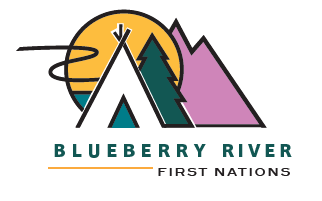Q&A with Mae Whyte, Restoration Program Manager, Blueberry River First Nations
“Traditional ecological knowledge is handed down through generations and it focuses on how living things, including people, relate to their environment. Combining this vital knowledge with genomics techniques and technologies is helping us chart a path forward to healing the land and the waters for future generations.” – Mae Whyte
Combined, genomics and traditional ecological knowledge (TEK) are powerful tools to help us tackle some of today’s biggest challenges, including biodiversity loss.
We asked Mae Whyte, Restoration Program Manager for Blueberry River First Nations, how genomics and TEK can support environmental sustainability and Indigenous communities. She has worked on restoration of riparian habitats—such as streams, rivers and lakes—and fish habitat assessment. She also built the Blueberry River First Nations water program north of Fort St. John, British Columbia, which includes environmental (eDNA) sampling.

Why is genomics important to environmental protection and sustainability?
According to the International Union for Conservation of Nature, habitat loss is the greatest threat to biological diversity worldwide. Genomics provides a snapshot of biodiversity, which can be used as an index of ecosystem health.
Where is genomics having the most impact?
Genomics is helping us continue our roles as leaders in freshwater stewardship, which is critical in our fragmented landscape and watersheds. Analyzing eDNA [genetic material shed from organisms into their environment] is a non-lethal way to get accurate biodiversity information. A single scoop of water from a stream can show if there are at-risk, invasive or culturally and economically important animal species. The earliest accessible versions of these genomic sampling technologies were primarily for aquatic ecosystems. However, there is interesting work being done with hair traps or pollen and invertebrate traps in terrestrial environments. That’s something we’re looking to expand into through the iTrackDNA project. The possibilities are exciting.
What do you mean by ‘non-lethal ways’ and why is this important?
In the past, we might have had to capture animals, tag them and even clip fins. Genomics allow us to generate data in non-destructive, non-lethal, less invasive ways that don’t disturb wildlife. Even something like a tag on a bird can affect a bird’s ability to find a mate. We’re avoiding those kinds of challenges by using genomics.
How are Indigenous communities leading this work and centering Indigenous knowledge?
Traditional ecological knowledge (TEK) is handed down through generations and it focuses on how living things, including people, relate to their environment. Combining this vital knowledge with genomics techniques and technologies is helping us chart a path forward to healing the land and the waters for future generations.

How can Canadian research and innovation better address the needs of Indigenous communities?
There is a tendency to think it’s okay to shoehorn Indigenous knowledge into a program that already exists, and a tendency to integrate TEK into existing plans. But that’s not going to be effective or appropriate. If you want to improve the impact of genomics innovation for Indigenous communities, you must properly embed TEK from the beginning. Here’s a simple example: if someone comes to the community with bread dough and says, “let’s bake,” they really mean let’s bake bread. What if the community wants to bake cupcakes? You’ll need to go shopping. You might as well take community members shopping with you to make sure you get the right ingredients before you start baking.
What kind of programs or infrastructure will ensure Indigenous people benefit from research in Canada?
In my work, I talk a lot about capacity building. We need sustainable, year-over-year funding, training and mentorship, especially for youth. It also comes back to proper, meaningful consultation. Program and infrastructure decision-making at the policy level must always include Indigenous voices. And we must consider the unique needs of individual communities so policies and infrastructure can be designed by and for them.
What emerging genomics innovations have the potential to make a positive impact for Indigenous communities?
Our current applications of eDNA sampling can help us to build a case for habitat protection—not just for fish and wildlife, but also for plants. Genomics gives us data to support protection and restoration, which can help us restore populations of culturally and ecologically significant plants and animals. On a local level, genomics can help us preserve the food and medicines our communities rely on.
